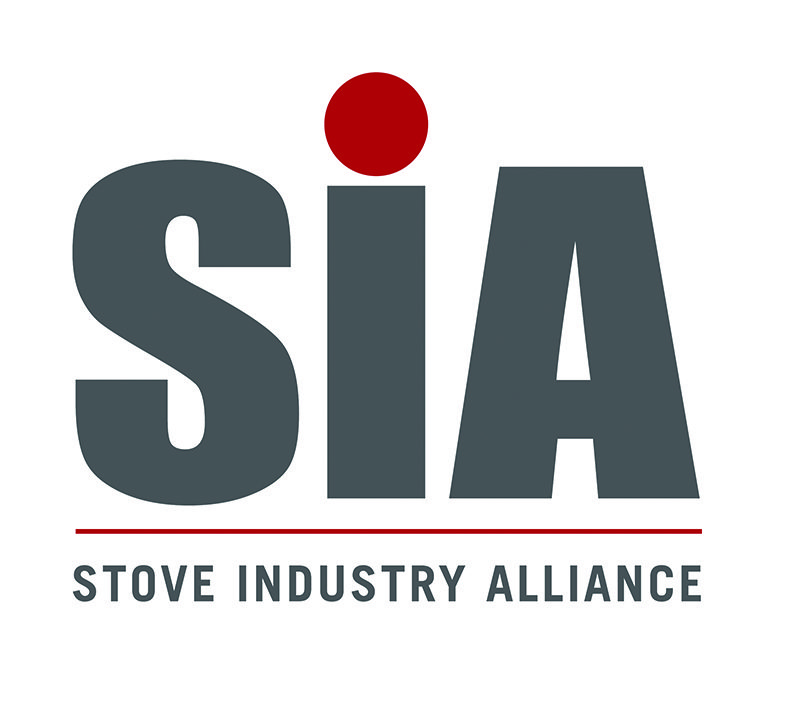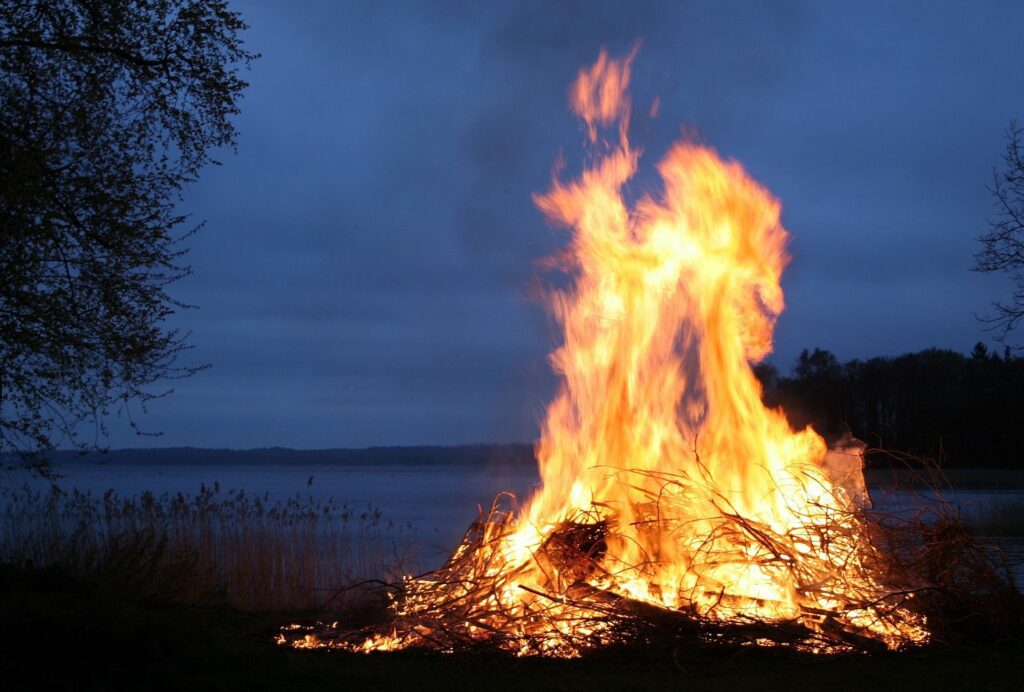Our friends at the Stove Industry Alliance have been very busy as a result of the fuel situation. They mentioned updating our visitors, following on from their last article on eco-design quality stoves, with more information on this topic. This article is an interesting one, covering indoor air quality and outdoor burning research findings.
With solid fuel burning, particularly woodburners, being given a hard time this research is a bit of an eye opener and shows just how people can be confused. We hope that this information will give you the facts you need in order to understand and make informed decisions moving forward.

Particulate Emissions and Air Quality from Domestic Activity
There are a range of everyday domestic activities that can affect the air quality both inside and outside the home, for example; driving your car, cooking your Sunday roast, having new carpets fitted, burning scented candles, having a bonfire in your garden or on your allotment and lighting your wood burning stove.
Two new research studies by the Stove Industry Alliance (SIA) are helping to further our understanding of the sources of particulate emissions from domestic activities. The studies highlight that previously accepted figures relating to the UK’s PM2.5 emissions from indoor domestic burning have been dramatically overstated, and that there is no scientific evidence for adverse health effects from exposure to indoor particulate matter linked to wood burning stoves.
Outdoor Burning and Air Quality
When it comes to burning outside of the home (e.g. on an allotment bonfire or incinerating your garden waste) an independently reviewed study, The Contribution of Outdoor Burning to UK PM Emissions (by Dr Josh Cottam and Dr Edward Mitchell) commissioned by the SIA and released in January this year, found the following:
- 46% (21,951 tonnes) of PM2.5 originate from outdoor burning.
- Significant quantities of fuel were found to be burnt outdoors, many sources of which are unregulated and highly polluting, such as bonfires.
- The largest single contributor to domestic outdoor burning emissions is green waste. This accounts for 90% of all outdoor burning emissions when combined with waste wood and rubbish.
- Modern Ecodesign stoves contribute just 2.7% of PM2.5 emissions from the burning of wood logs.
The study analysed the data from a wide range of sources including:
- the Defra commissioned Kantar Survey (2020),
- the EMEP/EEA Inventory Guidebook,
- NAEI,
- industry surveys and sales data,
- and a range of peer-reviewed journal articles.
These enabled the authors to establish new model estimates of domestic PM2.5 emissions from solid fuel combustion both indoors and outdoors.
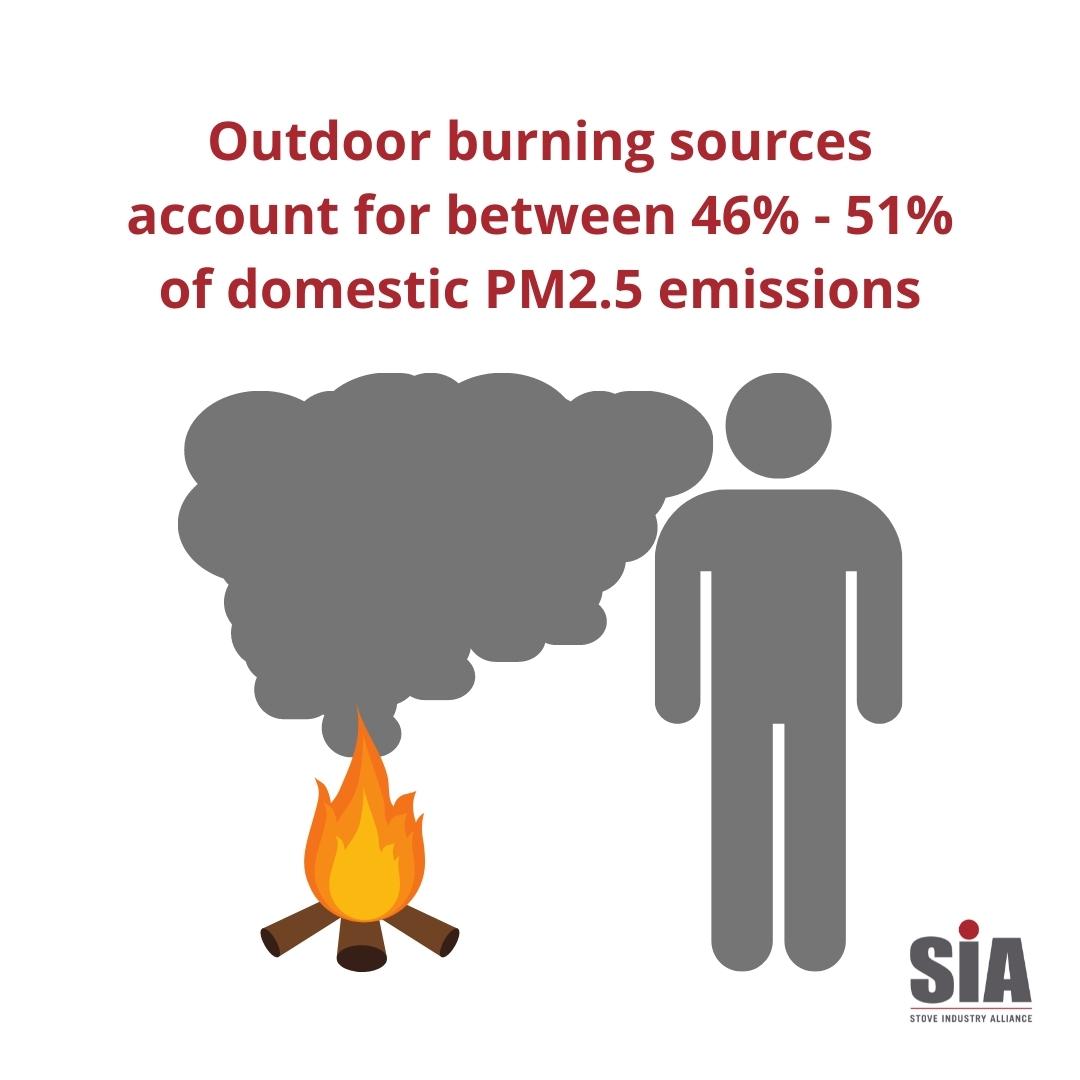
Government Figures
Shortly after the release of the research in February 2022 the UK government released its 2020 figures for particulate matter emissions. This latest data shows that the overall percentage of PM2.5 attributable to the domestic indoor burning of wood fuel has been more than halved to 17%. This is thanks to updated and more accurate wood fuel usage data for the domestic combustion sector.
Based on the findings of its outdoor burning research and the light that this sheds on the true contribution to PM2.5 emissions from modern, Ecodesign compliant stoves, and the latest government data, the SIA calculates that just 1.2% of UK PM2.5 emissions come from Ecodesign stoves.
The SIA believes that these latest government figures show the huge potential to lower PM2.5 emissions from domestic combustion even further by encouraging homeowners to upgrade their open fires to an Ecodesign stove. A stove that is clearSkies certified in place of an open fire can cut emissions by up to 90%.

The Contribution of Outdoor Burning to UK PM Emissions
also highlights the need for more action to be taken on unregulated outdoor burning and this is a topic that the SIA will be highlighting in its discussions with Defra and the devolved governments going forwards.
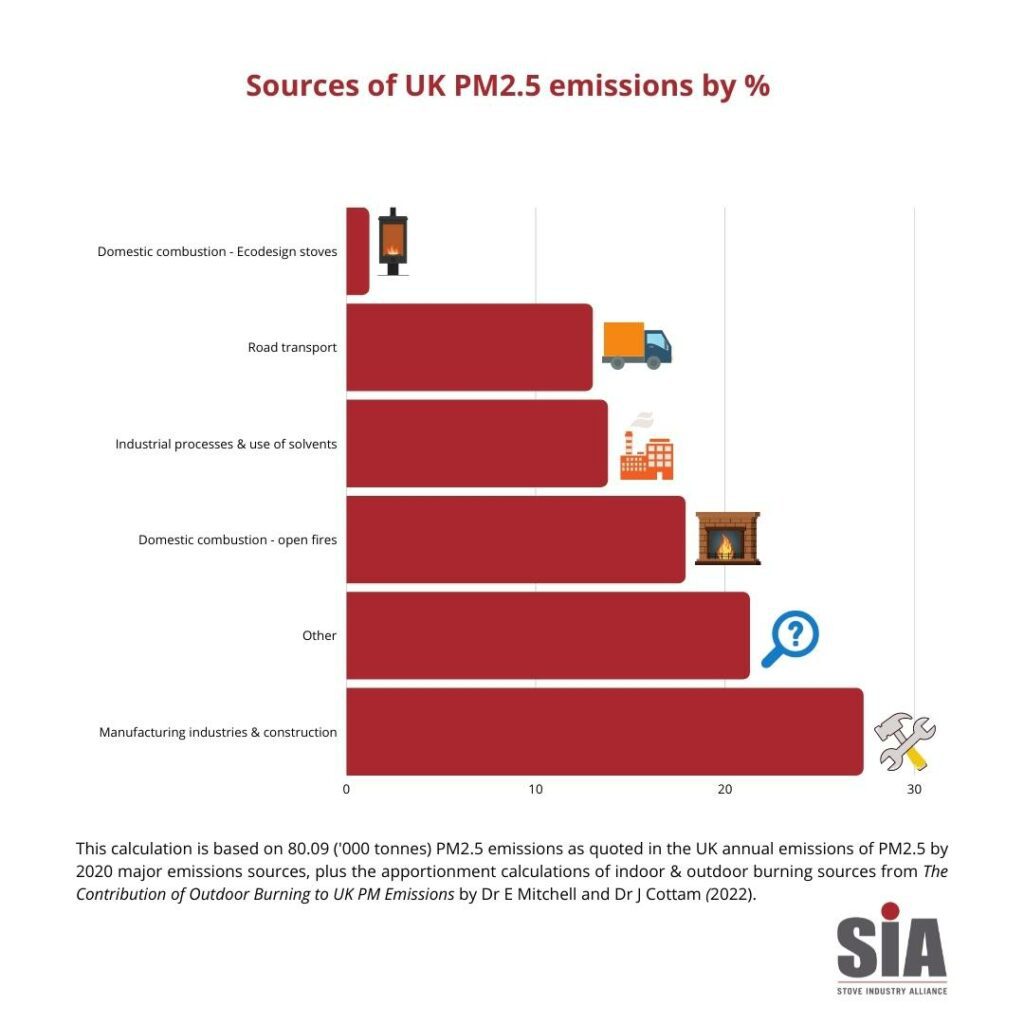
Emissions and Air Quality Inside the Home
A second piece of research commissioned by the SIA released in April this year took the form of a literature review looking at studies into the contribution from wood burning stoves to indoor particulate matter (PM) in the developed world and found no scientific evidence for adverse health effects.
Among the key findings of the Literature review: report on indoor air quality associated with woodburning by Dr Amanda Lea-Langton, senior lecturer in Bioenergy Engineering at the University of Manchester, were:
- No scientific evidence found for adverse health impacts from exposure to the indoor air typically associated with modern, enclosed wood burning stoves
- No association shown between exposure to indoor wood burning and risk of asthma in developed countries
- Use of modern wood burning stoves may help to improve air quality inside the home due to the natural draught created during wood stove operation that pulls air from the room into the appliance and from outside
- Other sources of particulate matter in the home, such as cooking, can release much higher levels of PM compared to modern, enclosed wood burning stoves, and could therefore have greater health risk potential
- In one study, oil-based cooking, such as frying food or grilling meat, had peak value PM concentrations significantly higher than the WHO recommended average 24hr exposure limit
- In the same study the Ecodesign wood burning stove indoor air quality averages during operation were below the WHO recommended limits.
Indoor Air Quality Studies
The review looked at evidence from over 35 different studies into the impact on indoor air quality in the developed world from solid fuel combustion, including the 2020 study by Chakraborty et al, Indoor Air Pollution from Residential Stoves: Examining the Flooding of Particulate Matter into Homes during Real-World Use.
There has been a common misconception that the use of wood burning stoves is detrimental to our health by their contribution to poor indoor air quality. The findings of this review do not support this assertion and highlight some important areas for further research. One broad literature review by a public body indicated that there was no association shown between exposure to indoor woodburning and the risk of asthma in developed countries.
The Review also rightly points out that modern stoves should not be compared with less sophisticated solid fuel combustion practices common in the developing world, and that studies exist which present data that indicates cooking and transport are greater contributors to human exposure to PM.
Other Things In the Home Give Higher PM Readings than Wood Burning Stoves
A Manchester University study conducted in 2021 found that candles, incense, and hairspray all gave higher PM10 and PM2.5 readings than the use of a modern Ecodesign stove. Most staggering however was the indoor air quality impact of cooking a fried breakfast, which gave PM readings over 20 times higher than the WHO recommended limit.
A common finding across several studies was that indoor PM exposure for wood burning stove users was seen to peak during refuelling and during ash removal. The SIA is working to raise awareness among stove users of the steps that can be taken to mitigate this with messaging around the importance of following the manufacturer’s instructions when refuelling a stove, refuel only when the fire-bed has become glowing embers, and releasing the door catch and opening the door very slightly to allow air pressure to settle before opening the door fully and adding more logs.”
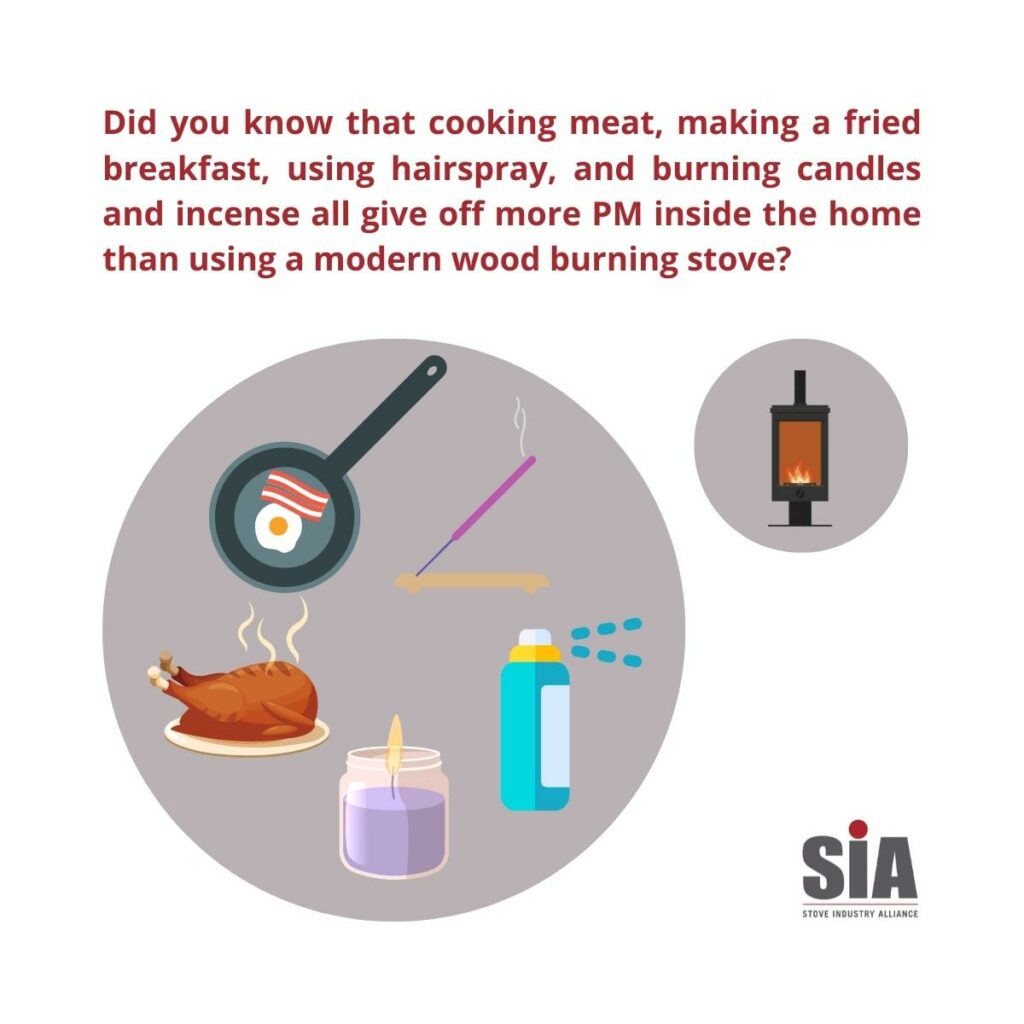
Air Quality Conclusion
We thank the Stove Industry Alliance for updating us with this important information on indoor air quality. With fuel prices rising and solid fuel burning being high on the agenda, it is important to understand the proven facts and not be misled by guesswork. From this we can deduce that running a woodburner or open fire in your home has less of an effect on the air quality and your health than you may think.
Burn wisely and with care, stay warm and safe folks. Read our Thatch Fire Safety Leaflet, and follow the best advice we can offer.
Update following Chief Medical Officers Annual Report December 2022
Here’s a useful and positive update.
SIA response to the CMO’s Annual Report 2022 from December 8th.
The report, which the SIA contributed to, was welcomed. It recognised all forms of domestic heating cause some pollution but had sensible recommendations regarding wood or solid fuel burning.
Air pollution emission reduction and the benefit of improved efficiency of appliances and who can help were all covered.



